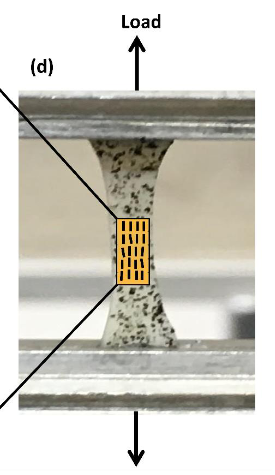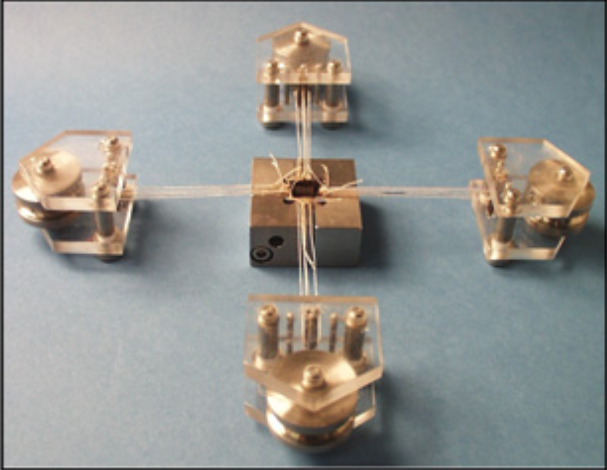ARTERIAL TISSUE MECHANICS

Arterial Tissue Mechanics – Atherosclerotic plaque tissue
Atherosclerotic plaque rupture in the carotid artery is known to be a major cause of ischaemic stroke. This study aims to provide further insights into atherosclerotic plaque rupture by mechanically testing human fibrous plaque caps, the region of the atherosclerotic lesion most often attributed the highest risk of rupture. The results obtained highlight the variability in the ultimate tensile stress, strain and stiffness experienced in atherosclerotic plaque caps. By pre-screening all samples using small angle light scattering (SALS) to determine the dominant fibre direction in the tissue, along with supporting histological analysis, this work suggests that the collagen fibre alignment in the circumferential direction plays the most dominant role for determining plaque structural stability.

Figure (1): pre-screening samples with small angle light scattering (SALS) to determine dominantly circumferential fibre dataset (FC). Digital image correlation (DIC) view of plaque cap with speckle undergoing test showing (A) initial sample setup and (B) failure at centre of sample.

Figure (2): Engineering stress -strain curves for (A) predominantly axial fibre datasets (FA) and (B) predominately circumferential fibre datasets (FC). Statistical analysis detailing the significant difference between (C) Ultimate tensile stress, (D) Ultimate tensile strain and (E) Stiffness between the groupings,∗p<0.05,∗∗∗p<0.0005
Reference
Johnston, R. D., Gaul, R. T., & Lally, C. (2021). An investigation into the critical role of fibre orientation in the ultimate tensile strength and stiffness of human carotid plaque caps. Acta Biomaterialia, 124, 291–300. https://doi.org/10.1016/j.actbio.2021.02.008
 Biaxial test specimen gripping jig [1].
Biaxial test specimen gripping jig [1].

Typical response of atherosclerotic plaque to cyclic testing. Dotted line represents the theoretical "load envelope" of the tissue. [2]
[1] C. Lally, A. Reid and P. Prendergast, "Elastic Behavior of Porcine Coronary Artery Tissue Under Uniaxial and Equibiaxial Tension", Annals of Biomedical Engineering, vol. 32, no. 10, pp. 1355-1364, 2004.
[2] E. Maher, A. Creane, S. Sultan, N. Hynes, C. Lally and D. Kelly, "Inelasticity of Human Carotid Atherosclerotic Plaque", Annals of Biomedical Engineering, vol. 39, no. 9, pp. 2445-2455, 2011. Available: 10.1007/s10439-011-0331-4.